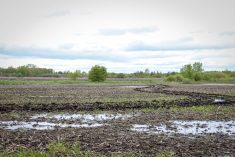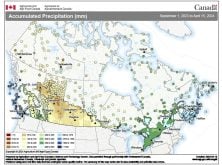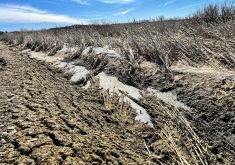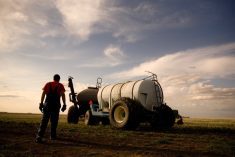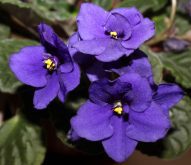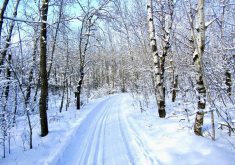In my early 20s, I had the privilege of tagging along with Cree trappers in northern Manitoba.
It was part of my youthful dream to learn how to live off the land, and who better to learn from than the people and communities that had been doing it for millennia?
When it came to hunting and trapping, I saw that my mentors’ knowledge of animals was gained mostly from accumulated observations of their tracks, especially in the winter. Tracks we encountered were always examined for any clues of what that animal was up to. All those observations were added to the database of detail used to decide how and where to trap and hunt.
Read Also
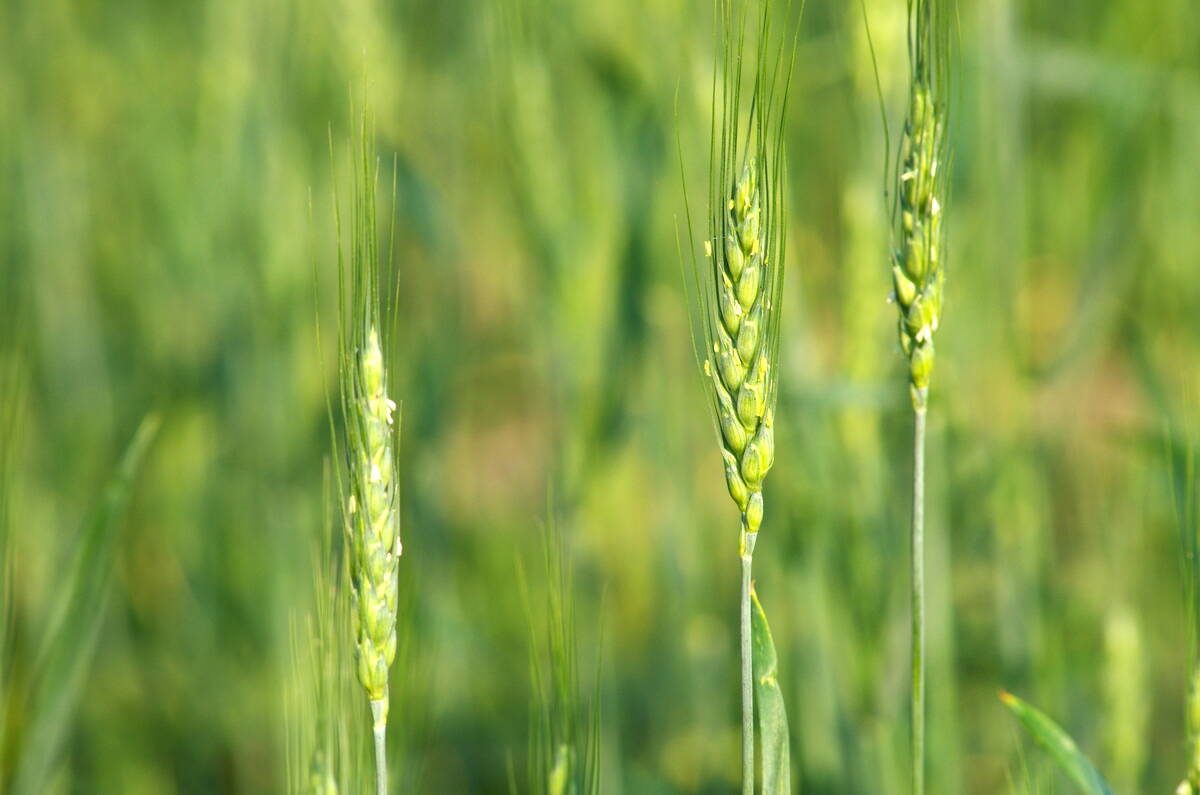
Code cracked on nitrogen-fixing wheat?
U.S. crop breeders have created a wheat variety capable of fixing its own nitrogen rather than relying on fertilizer.
For those who take the time to decipher the clues, tracks represent a little slice of animal behaviour. Come winter, each blanket of snow is a record of the movements of virtually every land animal, until the next snowfall comes and wipes the slate clean for a new set of recordings. There is much to learn from tracks, and winter is the best time to do it.

Pine martins make an appearance
Winter tracks can be the first evidence of a new species in a region.
About two decades ago, I was on a January walk along the Red River south of Winnipeg. I was with friends who owned the property, which featured mature stands of oak, ash and basswood. It must have been a good acorn year, because squirrel tracks were everywhere.
There was another set, however, that seemed out of place. I told my friends I was pretty sure a pine martin had passed through.
Significantly depleted a century ago by relentless hunting, martins have made a remarkable recovery. At the time of my winter walk, though, they were generally restricted to spruce and mixed-wood forests.
My friends are both excellent naturalists and had walked the same trail regularly that winter, and martins had never been in the area. I don’t blame them for being a little skeptical. But martin tracks were a daily sight where I trapped in the north. I stuck to my guns in the face of their good-natured teasing.
A few months later, I got a note from one of them saying they had, indeed, spotted a martin scampering up an oak tree.
A dryland cousin of mink, pine martin are excellent tree climbers and are specialists at hunting squirrels. it made sense that they would eventually find their way to the riparian woodlands of the Red River. These days, just about any mature forest in the province could be holding pine martin, as long as there is also a good population of squirrels.
Deer on the rocks
In the Whiteshell Provincial Park, where I do much of my deer hunting, I rarely see deer in the winter. Instead, I rely on tracks and trails to figure out their activities. When snow cover is still light, deer tracks will be found in the same places they frequent in autumn.

Once the snow gets to about shin-deep, habits change in the interests of energy. Mid-winter travel routes often track from one conifer thicket to the next. These thickets have a dense canopy, meaning less snow cover than in open forests and meadows.
These trails often lead to rock outcrops. Open outcrops sometimes have less snow cover than the surrounding forest as gusts of wind clear drifts, and the dark rocks and vegetation are the first patches of ground to become exposed by the sun in late winter.
Here, deer can also dig for reindeer moss, a nutritious lichen that is especially important for caribou in the north, but is also abundant on more southern outcrops.
Last February, along a lakeshore, I came across a string of outcrops about a kilometre long. Parts of the area looked so well trafficked that it could have been a winter cattle pasture.
When I got close, I could see the deer had been digging through the snow to feed on lichens. I also saw that they were feeding heavily on small shrubs that looked like sumac, while leaving blueberry bushes and other species generally intact.
What was easy to observe in the winter landscape would have been all but impossible to decipher in the lush green jungle of the summer months.
On that same trip, I came across a grizzly scene that had played out a few days earlier. About 100 metres from shore, there was the stripped skeleton, antlers and bits of hide left from a three-year-old buck that had been taken down by wolves.
Cracked leg bones reminded me of how strong a wolf’s jaw is. If I want to open a deer long bone, I need a saw and hammer.

Driving prey into the open is a common hunting strategy for wolves, so I checked the shoreline. Sure enough, I could see the buck had been pursued onto the ice by about five wolves. Soon after, the chase was over.
The wolves must have hung around the kill for several days, judging by how much the area had been beaten down. There were also tracks of foxes and ravens, scavenging what they could. While I didn’t see their tracks, jays and chickadees would also have joined in the scavenging.
Water tales
Early last winter I came across a group of otter tracks on some river ice. The tracks of these low-slung, web-footed, water-loving mammals are unmistakable. They spend as much time doing belly slides on the snow as they do running over it.
This troupe of three otters was heading to a set of rapids that stay open all winter.

With a long, sleek body and short legs, otters are ungainly on land, but are in their glory in the water. There, they are effective predators of fish, crayfish and other aquatic life.
If open water isn’t close, otters can also get under the ice by digging into muskrat lodges or beaver houses, a tactic that comes with the fringe benefit of surprising and possibly dining on the homeowners.
Tracks of otters’ pint-sized cousins, mink, have the same belly-drag pattern, especially in softer snow, but they aren’t the only ones.
During a December ruffed grouse hunt, I found myself walking along a tiny creek. I wasn’t surprised when I noticed what I thought were mink tracks that followed the creek before veering off across a meadow. The spot was exactly where you would expect to find mink sign in December.
But, I noticed, the belly was dragging more than usual. In fact, it looked like a tiny snow plough had gone through. On a hunch, I followed the track and, sure enough, a muskrat was at the end of it.
This hapless critter should have been snug under the ice at that time of the year. Something must have gone wrong in its little haven. Perhaps a beaver dam had failed and the pond drained out. Whatever had happened, the muskrat was now on the wrong side of the ice with only a faint hope of finding a new wintering site.
On top of that, an ungainly two-legged beast was encroaching on its space, trying to take its picture. One of my shots included a short video of this tiny tough customer coming at me with grim, ‘back off’ determination. The tiny counterattack, with the animal jumping at me and baring its teeth, was a little too close for my comfort.
In the forest
Aside from red and gray squirrels, snowshoe hares probably leave more tracks in the forest than any other mammal. Their tracks are usually a distinctive triangle, with the hind feet landing on the ground in parallel at the front and the two front feet lined up behind.
Their home base is usually a tangle of shrubs, deadfall or other heavy growth, from which they venture out to forage. Come winter, when leaves are gone and the forest floor is especially exposed, snowshoe hares often keep at least one toe under heavy cover at all times.

This is a good survival tactic, as great horned owls are a major predator. I have sometimes come across a hare track that ended in scuffled snow and giant wing marks, highlighting the perils of being in the open.
Most years, the forest is alive with mice, voles and other small mammals, but you don’t often see their tracks. These critters lead a subnivean or “under-the-snow,” life — foraging, feeding and even breeding their way through the winter months.
This survival strategy is best seen in the spring as the snow melts and tunnels marked by chewed grass can be visible. They will, however, make their way to the surface every now and then.
As the snow accumulates, you may see otherwise pristine snow with a hole at the surface, perhaps a centimetre or two wide. This is a ventilator shaft made by a small mammal burrowing up from its tunnels below. Snow cover is such an effective insulator that carbon dioxide levels can build up. These shafts help refresh the air in the tunnels.
Reading tracks
When it comes to reading tracks, I draw on my university training in ecology as well as my stint at “trapline college.” But, in the end, I think the most important attribute for learning from animal tracks is curiosity.
I can be an inconvenience during a winter walk in the forest, because I’m stopping by almost every track, trying to figure out the species and pick up clues on what the animal was doing at the time. Over time, these snippets are added to my memory banks and help me understand the natural world a little better.
In fact, I have come to enjoy track-reading as much as any other outdoors activity.




